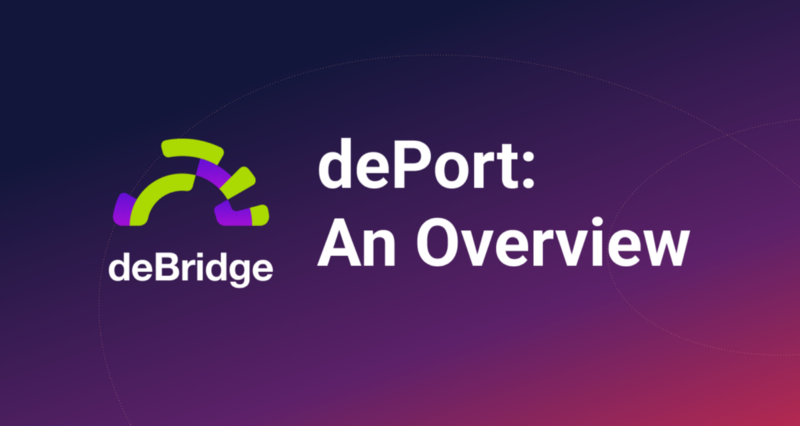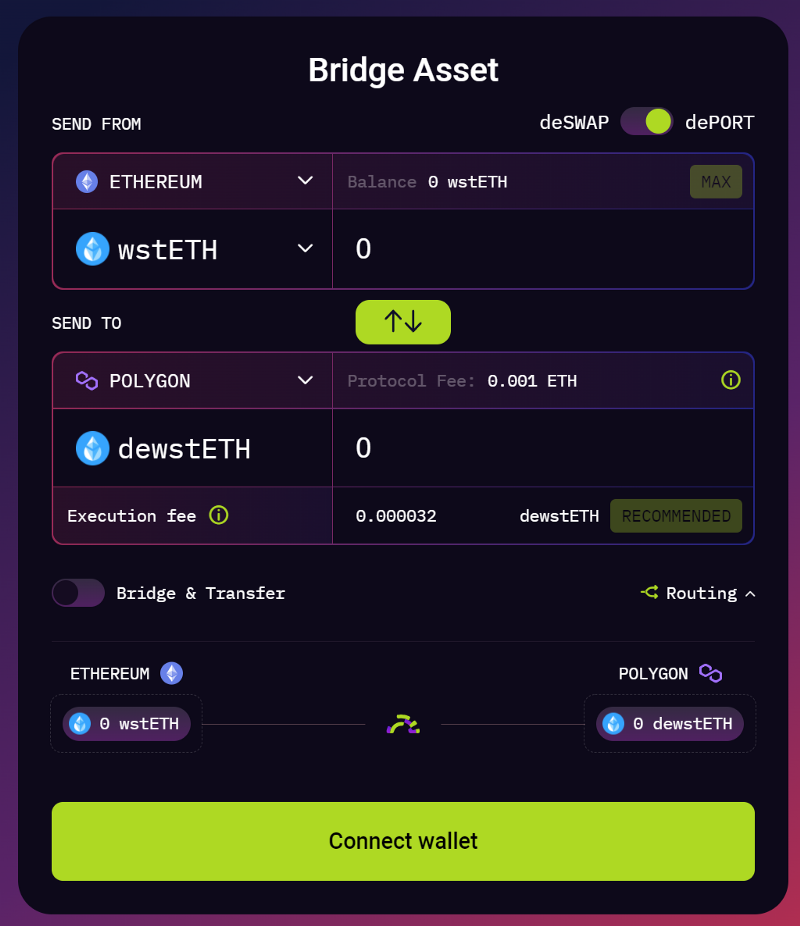dePort: Seamless Bridging Between Blockchains
dePort is a native bridge for assets within the deBridge protocol.

Blockchain networks are like cities where your wallet address is your passport. It’s often easier to stick to investing in your own city, however the options are wide open.
You have more flexibility in the web3 space and users should be in the ecosystem that’s reflecting their preferences. Some value decentralization, others speed and efficiency. Regardless of the underlying beliefs and values, deBridge enables everyone to explore the chains of their choice with more flexibility, freedom, and opportunities. This is where dePort comes in.
The new version of our bridging and swapping UI splits now into two: deSwap and dePort. Let’s dive into what this means for projects and users.
dePort 101
Before we dive into dePort, it’s important to distinguish deBridge from dePort and deSwap and how the protocol (deBridge) enables cross-chain applications. deBridge is a generic messaging and cross-chain interoperability protocol that enables transfers of assets and data between blockchain in one transaction.
Anyone can start building their own custom bridge on top of the deBridge generic messaging infrastructure and dePort is a native bridge for assets within the deBridge protocol.
dePort is using locking and minting mechanics. For projects and developers that start bridging with dePort, they will get a deAsset on the destination chain which is a 1:1 backed representation of the token locked on the source chain. By ensuring that the minted supply is always backed, it provides security and an improved user experience and guarantees that users will never face a liquidity imbalance problem which many other bridges have encountered.
Why use dePort
Trustless
There are no listings required or forms to be filled out. You can start to bridge your desired asset from the source chain to the destination right away. No time-consuming processes to get your token whitelisted or voted via a governance proposal.
Flexible
Flexibility and having options are crucial. If a token is bridged for the first time, together with the validation transaction unique deploy id that’s passed to the destination chain, the following parameters are included:
- Native token smart contract address
- Native chain id
- Token name
- Token symbol
- Decimals
The wrapped asset on the destination chain automatically put these parameters together with the first claim. No additional actions are required from the user and it’s all permissionless.
Scalable
If your protocol is deployed on BNB Chain and you would like to bring stETH Curve LP token from Ethereum, you can let users bridge that LP token and accept it as collateral in your protocol. dePort can also be used by projects to create utility for their assets on other chains.
Protocols and applications no longer need to deploy an instance on each blockchain they support and face ecosystem fragmentation issues with areas such as liquidity, ecosystem and technology. They can rather utilize deBridge to scale through allowing the exchange of commands and messages between different blockchains, resulting in users from different ecosystems to interact with other protocols as well. deAssets automatically scales up to all chains supported by deBridge.
These are some of the reasons for projects and developers to start building with deBridge and using dePort. You can find more details and get started building with deBridge here: https://docs.debridge.finance/build-with-debridge
What about deSwap?
deSwap is an application built on top of the deBridge framework that enables cross-chain swaps between arbitrary assets. With the best in-class routing algorithms via 1inch, deSwap enables capital-efficient swaps from any asset on Chain A to any asset on Chain B.
We have also built an API that can be used by dApps and business-to-consumer (B2C) projects such as wallets to provide users with the ability to do decentralized asset conversions directly within the application — all in 1 transaction.
If you’re interested in learning more about deSwap, you can read here: https://blog.debridge.finance/any-arbitrary-cross-chain-swaps-with-debridge-1inch-network-862212087d6a
And integrate the deSwap API with just a few lines of code: https://blog.debridge.finance/deswap-api-decentralized-cross-chain-swaps-for-protocols-and-applications-7c27304a6f33

We’re very excited to work with protocols to enable them to move cross-chain, and dePort is one of many applications spanning DeFi, NFTs, DAOs, and other areas that can be built on top of the deBridge architecture. If you’re building a protocol or application and want to go cross-chain, reach out to us on Discord or Telegram to get started.
dePort | Docs | Discord | Twitter | Website | Telegram | GitHub